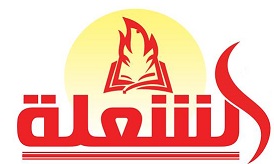Dialects are needed in order to specialize the band of connectives of the
- Replacing NEWCONNECTIVE with zero or more new connective symbols. Dialects cannot keep the extension point.
- Shedding no or even more of the predetermined conjunctive symbols in the list above. Languages usually do not change the fresh new semantics of your own predetermined connectives, but not.
- Replacing NEWQUANTIFIER with zero or more new quantifier symbols. Dialects cannot keep the extension point.
- Losing no or even more of your own predetermined quantifier icons in the list above. Yet not, dialects usually do not redefine the latest semantics of your own predefined quantifiers.
In the actual presentation syntax, we will be linearizing the predefined quantifier symbols and write them as Exists ?X1. Xn and Forall ?X1. Xn instead of Exists?X1. Xn and Forall?X1. Xn.
Every quantifier symbol has an associated list of variables that are bound by that quantifier. For the standard https://datingranking.net/beautifulpeople-review/ quantifiers Exists?X1. Xn and Forall?X1. Xn, the associated list of variables is ?X1. Xn.
RIF-FLD reserves the following symbols for standard aggregate functions: Minute, Max, Matter, Avg, Share, Prod, Set, and Handbag. Aggregate functions also have an extension point, NEWAGGRFUNC, which must be actualized. Dialects can specialize the aforesaid set of aggregate functions by
- Replacing NEWAGGRFUNC with zero or more new symbols for aggregate functions. Dialects cannot keep the extension point.
- Shedding no or higher of your predefined aggregate attributes in the list above. But not, dialects don’t change the semantics of the predefined aggregate characteristics.
As with most other expansion points, this isn’t an actual icon on the alphabet, however, a great placeholder you to definitely dialects should make up for no or higher genuine the brand new alphabet icons.
The symbol Naf represents default negation, which is used in rule languages with logic programming and deductive database semantics. Examples of default negation include Clark’s negation-as-failure [Clark87], the well-founded negation [GRS91], and stable-model negation [GL88]. The name of the symbol Naf used here comes from negation-as-failure but in RIF-FLD this can refer to any kind of default negation.
The symbol Neg represents symmetric negation (as opposed to default negation, which is asymmetric because completely different inference rules are used to derive p and Naf p). Examples of symmetric negation include classical first-order negation, explicit negation, and strong negation [APP96].
=, #, and ## are used in formulas that define equality, class membership, and subclass relationships, respectively. The symbol -> is used in terms that have named arguments and in frame terms. The symbol Outside indicates that an atomic formula or a function term is defined externally (e.g., a built-in), Dialect is a directive used to indicate the dialect of a RIF document (for those dialects that require this), the symbols Feet and Prefix enable abridged representations of IRIs, and the symbol Import is an import directive. The Module directive is used to connect remote terms with the actual remote RIF documents.
The newest signs
Finally, the symbol Document is used for specifying RIF-FLD documents and the symbol Class is used to organize RIF-FLD formulas into collections. ?
dos.step 3 Symbol Spaces
These or other abbreviations could be utilized because the prefixes about lightweight URI-like notation [CURIE], a notation to possess concise image out-of Iris [RFC-3987]. The specific concept of this notation into the RIF is placed from inside the [RIF-DTB].
The set of all constant symbols in a RIF dialect is partitioned into a number of subsets, called symbol spaces, which are used to represent XML Schema datatypes, datatypes defined in other W3C specifications, such as rdf:XMLLiteral, and to distinguish other sets of constants. All constant symbols have a syntax (and sometimes also semantics) imposed by the symbol space to which they belong.
- xs: stands for the XML Schema URI
- rdf: stands for
- pred: stands for
- rif: stands for the URI of RIF,




